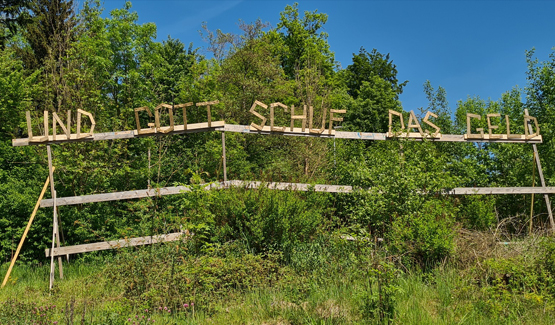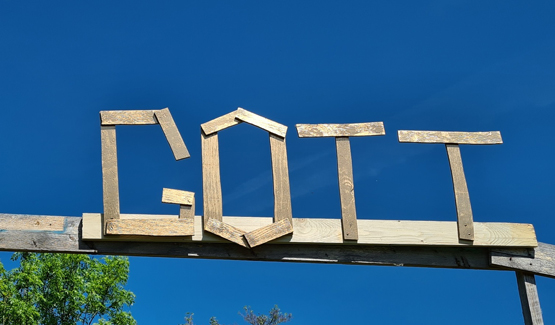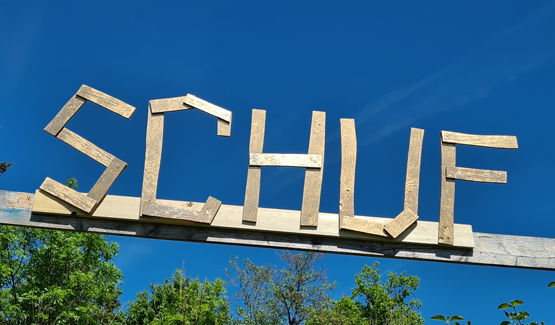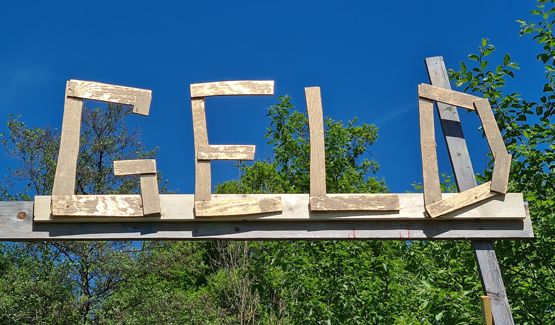Text Installation – 2022
Original – Wood, nails, golden spray
9 x 3.5 meters approximately
Watch Video
(1.18 min)






The new text-based work was added to the previous installation (The Edifice / 2021) that stood in the middle of the Museum 1. It read:
Und Gott schuff das Geld (And God Created Money)
It follows from the earlier work which read ‘Die Erde ist eine Ware (The Earth is a Commodity).
The work remained accessible and visible 24 * 7 to anyone who would pass by. Like the previous one, the new text is also designed to provoke the viewers to think over the extremely banal socio-economic thoughts that are accepted today as a normal part of the world we live in. The first text reads: ‘DIE ERDE IST EINE WARE’ (The Earth Is A Commodity).
The overall structure is created over multiple interventions to finally evolve to this one. The first two interventions were both performative and participative:
The Edifice – a Performance where Parvez invites the visitors to ‘work/labor’ for him and build the Scaffold, based on his design. Meanwhile he cooks a meal to thank/repay everyone for their labor with his labor and food.
A Game of Alphabets – Visitors participate and help the artist build alphabets from wood. He sprays golden color and add glitter to them before they are installed on the Edifice.
The third intervention was after 8 months (January 2022) when the letters were spray painted with bright neon colors to give it a fresh look against a cold grey winter.
The final intervention took place in May 2022, with this new playful text.
This public art project continued till Museum 1 closed down a year later in 2023.
The choice of material (wood) and the roughness of the creation were consciously designed to fit the space unobtrusively and also to reflect upon the idea of aesthetics and value in art.
The multi-intervention sculpture was created as a central-piece during Parvez’s solo show, ‘COMMODI-FICTION’ at Museum 1 that started in April 2021. The exhibition was based on the ideas proposed by Karl Polanyi, the Austrian-Hungarian economist, historian and thinker in his analysis of Industrial revolution published in 1948, ‘The Great Transformation: Political and Economic Origins of Our Times’. The artist expanded upon his ideas, played with the workings of a market-based economy and also explored its connection with (neo)colonialism – the continuation of colonial subjugation and exploitation through economic, political, cultural, and/or other tools.
Polanyi’s concept of a false commodification of ‘land, human labor and currency’ remains at the heart of the work.
Installed at:
Museum 1 – 2022
